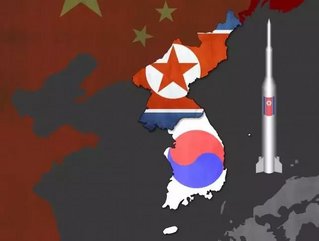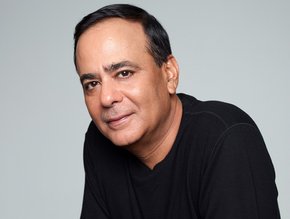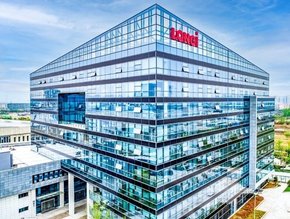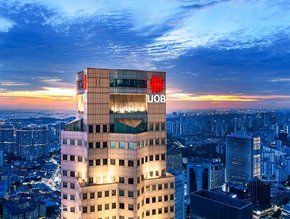North Korea and the business of nuclear protection

With North Korea now launching ICBMs directly over Japan, Business Review Asia investigates the growing market in the ‘land of the rising sun’, for nuclear shelters and anti-radiation apparel…
The world gasped on 28 August when North Korea leader Kim Jong Un ordered the launch of an ICBM (intercontinental ballistic missile) directly over Japan. North Korea was no longer being viewed as an archaic joke, beating its chest to no one but itself. North Korea was now a deadly serious threat.
For many Japanese people, already alarmed by the news filtering in of its neighbour’s supposed nuclear threat, the missile that flew over their heads this August confirmed their very worst fears. North Korea could hurt Japan.
The fear of the rogue state has been palpable in Japan for some time. Indeed, sales of nuclear shelters and respirators designed to deal with sarin gas have been rising steadily over the past two years. The Japanese government has screened a 30-second, primetime warning on TV, advising citizens to take shelter inside concrete bunkers during an attack. The TV broadcast actually heightened the sense of fear, with many panic-buying food and supplies. Many Japanese towns have been conducting evacuation procedures since the first missiles landed within Japan’s exclusive economic zone last March, and when North Korea celebrated its birthday recently, 60,000 Japanese people prepared to evacuate their homes.
Sales of nuclear bunkers have spiked also, with many manufacturers experiencing a year’s worth of sales in a month as the Japanese population looks to ‘shelter manufacturers’ to keep them safe in the event of a missile strike, both from a direct blast and the after-effects of radiation or nerve gas. Sales of Swiss-made air purifiers – that keep out poisonous gas and radiation – have wiped the shelves clean.
US-based company Atlas Shelters has responded to this demand by opening a new factory. President of the company Ron Hubbard says: “Our business is booming. We just opened a new 400,000 sq ft factory in Texas with Japanese investors, with the view to supply the Japanese market.”
This response from companies around the world goes to show that the Japanese are definitely preparing for the worst. Hubbard continues: “Today we sent bunkers by ship to Japan. We will export hundreds of small shelters to Japan yearly now, primarily for new homes being built. The average price is around $25,000, but we have models ranging from $9,999 to $10mn.”
Sales of bomb shelters first began rising after last year’s US election, at least for Gary Lynch, General Manager of Rising S Bunkers in Texas. He told the Miami Herald in January that sales were up 700% since President Trump was elected. Like many shelter companies shipping worldwide, Rising S Bunkers is “steady with orders” across its markets. We spoke to him about the recent demand from Japan - he says: “The Japanese people are extremely worried about the uncertainty caused by Kim Jong Un.”
Osaka-based Seiichiro Nishimoto’s shelter manufacturing company has seen inquiries rise dramatically since the start of the year. Another Japanese company, Oribe Seiki Seisakusho, is offering a shelter for up to 13 people costing £171,028 – or 25mn Japanese Yen. Most of the companies supplying bunkers to the Asia region right now, however, are based in the US.
US defense contractor Norad Shelters has seen an increase in business around the world, not just from Japan. Principal Mechanical Engineer Walton McCarthy says: “Demand has grown for underground shelters as a result of the North Korea missile testing, it has doubled in the last two months for corporate, personal and military clients. The problem now is that many shelter manufacturers are flooding the market with unrated shelters that provide little or no protection against radiation.”
This means that while a shelter might protect from a bomb blast, they don’t take into consideration the after-effects of a nuclear weapon. McCarthy says: “Consumers [are] desperate to purchase shelters without asking the manufacturer to state what level of shielding the shelter provides.”
McCarthy has written extensive guidelines for buyers looking for shelters to ensure they get the right level of shielding under the threat of a nuclear attack. To keep shelter prices down, some companies install substandard air filters, giving only overhead detonation figures when other factors need to be taken into account, and don’t list radiation figures coming from air ducts and entrance ways.
It’s not just US companies that are seeing an up-tick in sales either. Oribe Seiki Seisakusho, a shelter builder in Western Japan, has received eight orders this month, two more than its usual total for an entire year, Reuters reports.
Those building bunkers tend to keep it quiet, but in speaking to a number of shelter companies across the world, it's evident that the recent political climate in Asia is affecting sales in the region. This goes beyond the growing number of survivalists (also known as preppers) in the world – already a multi-billion-dollar industry – and extends to everyday people who are looking to the skies and wondering ‘what if?’.
As this threat grows and North Korea tests more and more missiles, so the demand for shelters will continue to rise. While the threat of a nuclear strike is a terrifying prospect, it serves to grow a very niche market both in Asia and worldwide.
Business Review Asia - October






